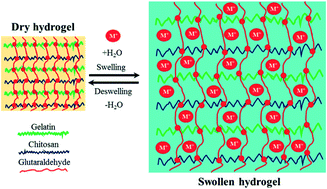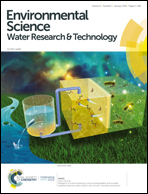Gelatin–chitosan hydrogel particles for efficient removal of Hg(ii) from wastewater
Abstract
Unregulated discharge of nonbiodegradable heavy metals (HMs) from mining operations, tanneries, and metal plating is posing an impending global water pollution concern. Early detection, accurate determination, and practical removal of HMs from industrial water are vital for a clean ecosystem and critical for the survival of imperiled aquatic life. Herein we report a robust, green, and cost-effective approach for the removal of heavy metal ions such as Pb(II), Hg(II), Cd(II), and Cr(III) from wastewater using a synthetic bioadsorbent made of gelatin–chitosan (GC) hydrogel particles, operated at neutral pH and laboratory temperature. The chemical and structural morphology of the synthesized hydrogel was confirmed by Fourier transform infrared spectroscopy (FTIR) and scanning electron microscopy (SEM), respectively. HM ion adsorption was first tracked by the coffee ring effect (CRE) and subsequently characterized by inductively coupled plasma mass spectrometry (ICP-MS). As compared to Pb(II), Cd(II), and Cr(III) metal ions, the hydrogel particles displayed a quite notable binding affinity for Hg(II). Also, the hydrogel particles were examined for selective adsorption of HMs. As such, this strategy is robust and cheap, and could efficiently remove Hg(II) metal ions from wastewater.



 Please wait while we load your content...
Please wait while we load your content...